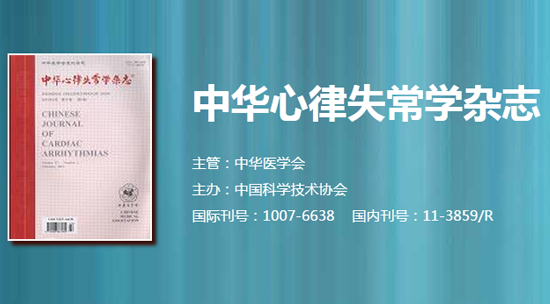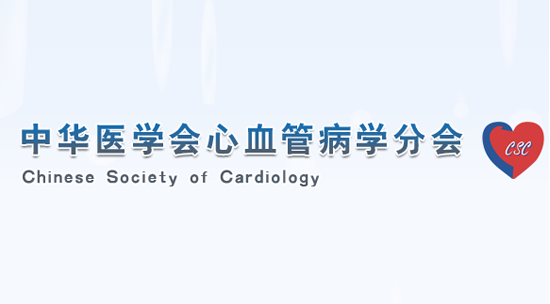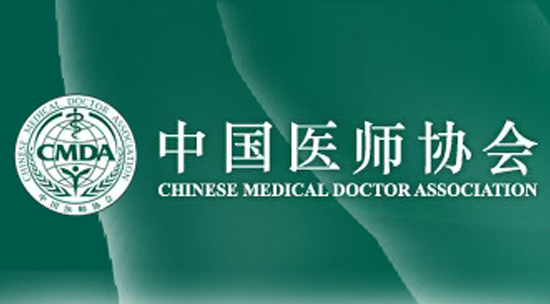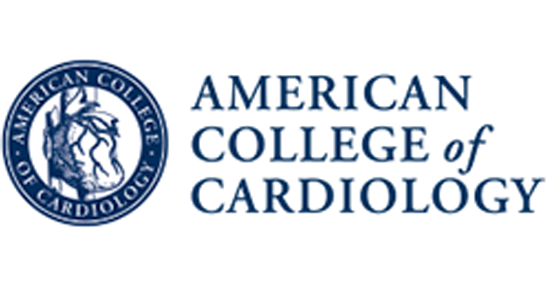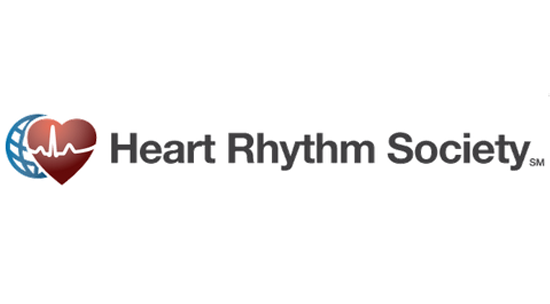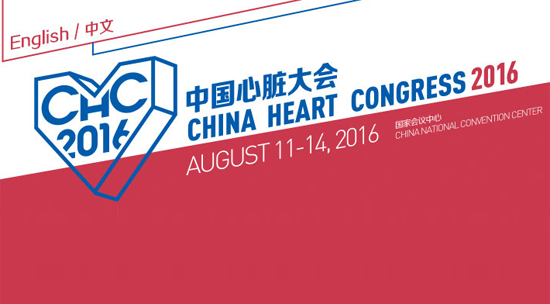Heart Rhythm主编—陈鹏生教授语音速递(七月刊 英文版)
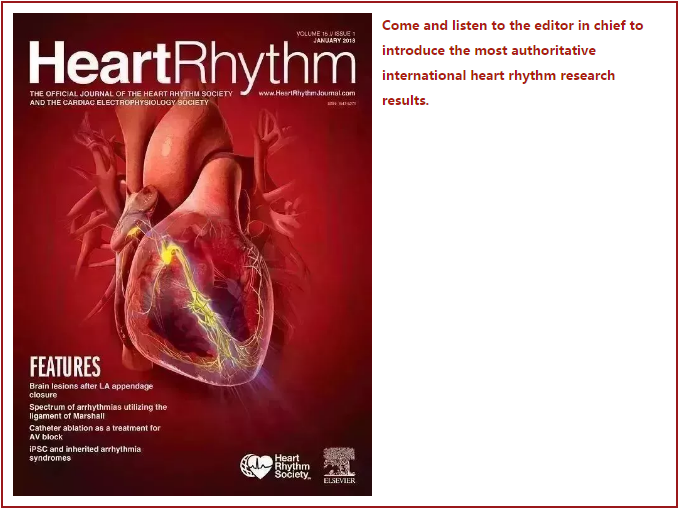
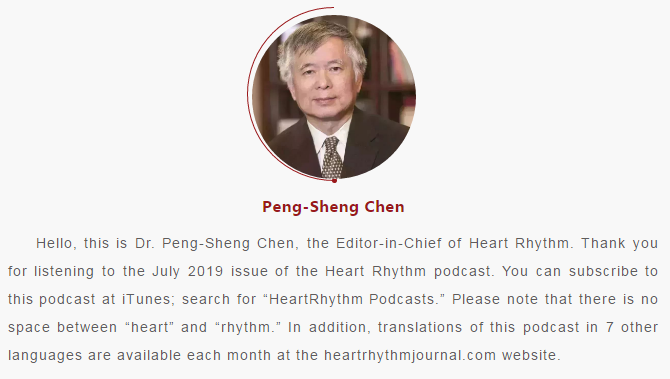
1
The featured article this month is an original article titled “Adaptive Cardiac Resynchronization Therapy is Associated with Decreased Risk of Incident Atrial Fibrillation Compared to Standard Biventricular Pacing” by Hsu et al. from UC San Diego. An accompanying video author interview conducted by our online editor, Dr. Daniel Morin, can be found at the www.heartrhythmjournal.com website. The adaptive CRT algorithm adjusts AV timing each minute and VV timing every 16 hours according to measured cardiac intervals. This algorithm is aimed to provide appropriate BiV pacing or LV-only pacing. The authors followed 37,000 patients for 15 months. They found that adaptive CRT pacing compared to standard BiV pacing was associated with a 50% lower risk of AF in patients with both long and short PR intervals. Furthermore, a higher percentage of LV-only pacing during adaptive CRT was also associated with lower incidence of AF. Because the development AF worsens the prognosis of heart failure, reducing the risk of AF might improve outcomes.
2
Next up is a paper titled “Safety of Rapid-Switching from Amiodarone to Dofetilide in Atrial Fibrillation Patients with Implantable Cardioverter Defibrillators” by Sharma et al from Kansas City Heart Rhythm Institute and Research Foundation. Current drug guidelines mandate waiting for 3 months prior to initiating dofetilide after stopping amiodarone. The authors studied rapid switching from amiodarone to dofetilide in hospitalized patients with atrial fibrillation and an ICD. The patients were followed for 13 months. They found that AF patients with an ICD can be switched to dofetilide only 7 days after discontinuation of amiodarone, without significant arrhythmia related complications. A prospective study will be needed to further document the safety of rapid switching from amiodarone to dofetilide.
3
Groh et al from UC San Francisco wrote the next paper, titled “Patient-Reported Triggers of Paroxysmal Atrial Fibrillation”. The authors studied about 1300 patients with symptomatic AF. The most commonly reported triggers were alcohol (in 35%), caffeine (in 28%), exercise (in 23%), and lack of sleep (in 21%). The authors conclude that the majority of patient-reported triggers are modifiable, potentially identifying accessible means to prevent and reduce AF episodes. Lifestyle modification focusing on those triggers might reduce symptomatic AF episodes.
4
Next up is “Cardiac Sympathectomy For Refractory Ventricular Tachycardia in Arrhythmogenic Right Ventricular Cardiomyopathy” by Assis et al from Johns Hopkins University. The authors aimed to evaluate the role of bilateral cardiac sympathetic denervation in ARVC patients with refractory VT. They had 8 patients, and 5 of them had no recurrent VT after 1.9 years of follow up. The authors conclude that bilateral cardiac sympathetic denervation may be an effective option for ARVC patients with refractory ventricular arrhythmias. Because those patients have very few other options, this approach may be life saving.
5
The following article is titled “Endoscopic evaluation of the esophagus after catheter ablation of atrial fibrillation using contiguous and optimized radiofrequency applications” by Wolf et al from Sint-Jan Hospital Bruges, Belgium. The authors recently described an ablation strategy aiming to enclose the PVs with contiguous, stable and optimized RF applications (referred to as CLOSE-PVI). They performed endoscopy in 85 of these patients 9 days after PVI, showing a remarkably low incidence of 1.2% of esophageal or peri-esophageal2injury after CLOSE-PVI. This compared favorably to the 18% incidence endoscopic evidence of esophageal injury after conventional PVI. The authors conclude that this strategy of delivering contiguous, relatively high-power, and short-duration applications at the posterior wall is safe. This approach may significantly reduce the incidence of esophageal injury during AF ablation.
6
Next up is an article by Nakamura et al from Vanderbilt University Medical Center, titled “Catheter ablation of polymorphic ventricular tachycardia / fibrillation in patients with and without structural heart disease.” The authors reviewed data from 32 consecutive patients with recurrent polymorphic VT/VF who underwent catheter ablation. All 13 idiopathic VF patients underwent PVC ablation only. The remaining 19 patients with structural heart disease often showed a low voltage scar, associated with PVCs or inducible sustained monomorphic VT. When present, substrate ablation targeting scar is a reasonable option to treat polymorphic VT/VF even if PVCs are absent. Over 75% of the patients remained arrhythmia free after 540 days of follow up. This paper shows that a high success rate can be achieved in ablating polymorphic VT/VF in patients with and without structural heart disease.
7
Kawaguchi et al from Japan Red Cross Yokohama City Bay Hospital wrote the following article titled “Clinical Impact of an Ethanol Infusion into the Vein of Marshall on the Mitral Isthmus Area evaluated by Atrial Electrograms recorded inside the Coronary Sinus.” The authors studied 84 consecutive patients with atrial fibrillation undergoing mitral isthmus ablation with successful vein of Marshall ethanol infusion. The authors examined coronary sinus atrial electrograms to identify the left atrial and coronary sinus myocardial components. Coronary sinus myocardial isolation is successful if these two components are disconnected by alcohol infusion. If not, touch up RF application was needed. Overall, vein of Marshall ethanol infusion combined with endocardial RF ablation created bidirectional conduction block of 93% of the patients. These findings indicate that careful assessment of atrial electrogram within the coronary sinus can predict a requirement for touch up RF ablation in the coronary sinus.
8
The next article is titled “Evidence of Relevant Electrical Connection between the Left Atrial Appendage and the Great Cardiac Vein During Catheter Ablation of Atrial Fibrillation” by Di Biase et al from the Albert Einstein College of Medicine. The authors report 488 consecutive patients undergoing catheter ablation for AF. In 7% and 8% of the cases respectively, epicardial and endocardial ablation are needed for electrical isolation of the LA appendage. These findings suggest the presence of a distinct electrical connection between the great cardiac vein and the LA appendage. The great cardiac vein merges with the vein of Marshall to form the coronary sinus. Generally the vein of Marshall has muscle sleeves, while the great cardiac vein does not. The findings of the present study indicate that in a small percentage of patients, electrical connections are present between the great cardiac vein and the left atrium. The clinical importance of these connections remains to be determined.
9
Thibault et al from the Montreal Heart Institute wrote the following article titled “Dynamic programming of atrioventricular delay improves electrical synchrony in a multicenter cardiac resynchronization therapy study.” The device-based algorithm dynamically adjusts AV delays to the intrinsic AV interval, reduced by a programmable offset, to accommodate each patient’s needs. The authors studied 90 patients with intact AV conduction. They found that dynamic AV programming acutely shortened QRS duration beyond conventional CRT, particularly with patient-specific optimization. The shortened QRS duration suggests better mechanical synchrony. Whether or not the acute QRS duration shortening translates into better long-term outcomes remain to be determined.
10
The next article is “Predicting defibrillator benefit in patients with cardiac resynchronization therapy: A competing risk study” by Weber et al from University of Basel, Switzerland. The authors studied 720 patients with median follow-up of 7.2 years. About one third of patients died. They developed a scoring system to predict ICD therapy and death without ICD therapy. Using competing risk models, the authors found that different factors predict ICD therapy or death without ICD therapy in CRT-defibrillator patients. Using their scoring system, they were able to identify one-quarter of patients with low predicted benefit from CRT-defibrillator implantation. This may be important when making decisions about which device therapies to use.
11
The following article covers a very similar subject, and is entitled “Cardiac Resynchronization Therapy Using Pacemakers versus Defibrillators in Patients with Non-Ischemic Cardiomyopathy: The United States Experience from 2007 to 2014.” It was written by Saba et al from the Heart and Vascular Institute, Pittsburgh, Pennsylvania. The authors used 2007- 2014 Medicare data for this analysis. In the propensity score matched sample, the time to all- cause mortality, any hospitalization, and cardiac hospitalization did not differ between matched CRT-pacemaker and CRT-defibrillator recipients. However, CRT-pacemaker recipients had significantly lower medical costs, by about $20,000. Together, the above two articles indicate that CRT-defibrillators may not be clinically beneficial for all patients with heart failure. It may be possible to use a scoring system to identify those who most likely will not benefit from CRT- defibrillator. These data may help physicians and patients choose the most appropriate CRT devices for their clinical condition.
12
O'Leary et al from Boston Childrens Hospital wrote the following article titled “Differentiation of fasciculoventricular fibers from anteroseptal accessory pathways using the surface electrocardiogram”. Fasciculoventricular fibers are responsible for 1%-5% of cases of asymptomatic preexcitation on the ECG. Unlike ventricular preexcitation seen in WPW syndrome, fasciculoventricular fibers are not associated with sudden cardiac death from preexcited atrial fibrillation. The authors retrospectively identified 24 cases of fasciculoventricular fibers and compared them with 48 consecutive patients with anteroseptal accessory pathways. Patients with anteroseptal accessory pathways had significantly higher delta wave amplitudes, shorter PR intervals, and longer QRS durations than did those with fasciculoventricular fibers. Among them, delta wave amplitude was the only independent indicator of an anteroseptal accessory pathway. These findings will be helpful in differentiating fasciculoventricular fibers with an anteroseptal preexcitation pattern from real WPW syndrome resulting from atrioventricular accessory pathways.
13
The next paper is “Calcium/calmodulin-dependent protein kinase II causes atrial structural remodeling associated with atrial fibrillation and heart failure” by Liu et al from the University of Massachusetts Medical School. The authors used a porcine AF-heart failure model for this study. They found that the CaMKII levels and activity increased progressively in the early stages of AF-heart failure. Inhibiting CaMKII using CaMKII inhibitory peptide preserved atrial contractile function and attenuated atrial hypertrophy, fibrosis, and apoptosis, but did not affect inflammation or myolysis. These results suggest that CaMKII mediates signaling pathways related to atrial contractile function and structural remodeling in AF. CaMKII inhibition using the inhibitory peptide is potentially a novel therapy for AF.
14
Next up is “Multiple mechanisms underlie increased cardiac late sodium current” by Kroncke et al from Vanderbilt University. The authors previously identified the R1193Q variant in the SCN5A gene that is common in the general population, suggesting it is not pathogenic. However, this variant can generate a large late sodium current in human embryonic kidney4cells. In the present study, the authors compared functional properties of the SCN5A R1193Q variant to those of ΔKPQ, a common deletional mutation of SCN5A gene that causes type 3 long QT syndrome. They found that these two mutations consistently cause large late sodium currents in different cell types, but that the mechanism by which the late current is produced is different. These data suggest that observing a late current in an in vitro setting does not necessarily translate to highly pathogenic LQT3 phenotype. It is possible that the mechanistic distinction gives rise to differences in the penetrance of these SCN5A variants.
15
Zhang et al from Peking University First Hospital, Beijing, China wrote the following article titled:“An increase in CO2 levels by upregulating late sodium current is proarrhythmic in the heart”. Hypercapnia is commonly observed in disease conditions. The authors test the hypothesis that increased CO2 will augment late sodium current and contribute to arrhythmogenesis in rabbit hearts with reduced repolarization reserve. The results show that increased CO2 levels enhance late sodium current and are proarrhythmic factors in the heart with reduced repolarization reserve, possibly through mechanisms related to the phosphorylation of CaMKII-delta and NaV1.5. These findings suggest that elevated blood CO2 levels may contribute to arrhythmogenesis.
16
The next article is titled “Intermittent high impedance from the lead-device compatibility problem” by Tanawuttiwat et al from the University of Mississippi Medical Center. The authors report a series of 5 cases of transient high lead impedance on remote evaluation. These cases shared a common combination of Boston Scientific INOGEN MINI ICD and a Model 6935 Sprint Quattro Secure S lead by Medtronic. These cases demonstrate episodic high pacing impedance measurements associated with leads connected to devices from different manufacturers. These risks should be considered when device components from different manufacturers are used.
17
These original articles are followed by two reviews. One was written by Maor et al from Tel Aviv University on “Pulsed electric fields for cardiac ablation and beyond”, and the second was written by Wilde et al from the Academic Medical Center, Amsterdam on “Role of the Purkinje system in heritable arrhythmias”. This month’s HRS 40th Anniversary Viewpoint is written by Dr Robert Myerburg from University of Miami, and is titled “Reflections on a Career in Cardiac Electrophysiology— Parallel Pathways and Intersections.”
I hope you enjoyed this podcast. For Heart Rhythm, I’m Editor-in-Chief, Dr. Peng-Sheng Chen.
